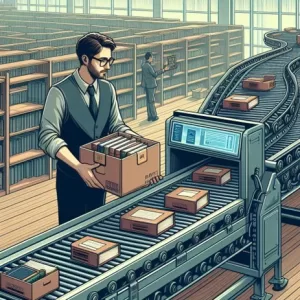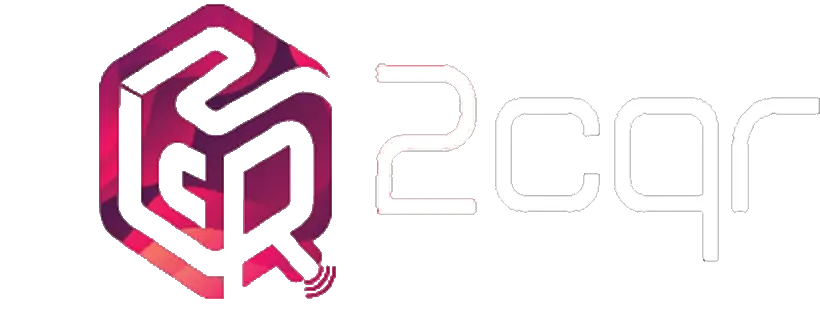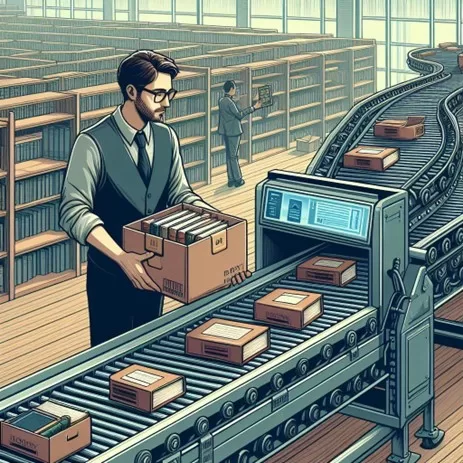In libraries, sorting and shelving books by hand can take so much of time and effort, especially when dealing with hundreds or even millions of books. Luckily, there's a solution for this: Automatic book sorters. These machines do the sorting work for us, making things way easier. But how exactly do they do it? Let's find out!
An automatic book sorter is a machine or system designed to efficiently organize and sort books based on various criteria such as title, author, genre, or destination. These systems are commonly used in libraries, bookstores, and distribution centers to simplify the process of shelving, locating, and distributing books.
Automatic book sorters typically use a combination of technologies such as barcode scanners, RFID (Radio Frequency Identification), conveyor belts, and computer software to identify, categorize, and route books to their respective destinations.

How do Automatic book sorters work ?
- Input of Books : Books are typically fed into the sorter either manually by library staff / patron or through automated systems such as conveyor belts.
- RFID or Barcode scanning : The sorter employs advanced scanning technology, such as barcode scanners or RFID readers, to capture essential information about each book. This information may include the book’s ISBN (International Standard Book Number), title, author, and other important details encoded on the book’s barcode or RFID tag.
- Sorting : Once the information is captured, the sorter’s software utilizes advanced sorting algorithms to analyze the data and determine the appropriate destination for each book. This destination could be a specific shelf within the library, a designated bin for reshelving, or even an outgoing shipment for interlibrary loans or returns.
- Transportation : Books are then transported along a network of conveyor belts to their respective destinations. The sorter may have multiple sorting arms, each designated for a specific category or destination, ensuring that books are directed to the correct location.
- Shelving : Finally, the book is neatly shelved according to its assigned category, ready for future retrieval.
- Integration with Library Management Systems : Automatic book sorters are often integrated with library management software or bookstore management software, allowing for adequate communication between the sorter and the library’s catalouging system. This integration ensures that inventory records are automatically updated as books are sorted and shelved, reducing the likelihood of discrepancies in the library’s collection.
Types of Automatic book sorters :
- Linear Sorters : Think of a conveyor belt at a factory where items move in a straight line for processing. Similarly, linear sorters use a conveyor belt system where books move along the belt and are sorted into different categories at various stations, like how packages are sorted at a distribution center.
- Circular Sorters :Picture a rotating table with sections like slices of a pie. Each section represents a different category. As the table spins, books are placed into the sections based on where they belong, like mystery novels going into one section and science books into another.
- Vertical Sorters : Think of a tall tower with many shelves, like a bookcase. Books are dropped into slots at the top, and each slot represents a different category or destination. With the help of Gravity the books are detected and moved down to the right shelf automatically.
- Robotic Sorters : Robotic sorters utilize robotic arms equipped with advanced sensors and artificial intelligence algorithms to identify and sort books. These systems employ visual recognition technologies to determine the category of each book and then send them to their designated sorting locations.
- Carousel Sorters : Carousel sorters feature a rotating carousel with multiple compartments or shelves. Books are placed onto the carousel, and as it rotates, they are directed to specific compartments based on sorting criteria such as genre, author, or destination.
- Hybrid Sorters : Hybrid sorters integrate multiple sorting technologies, combining elements of conveyor-based systems, robotic sorting, and other sorting mechanisms to create customized sorting solutions tailored to specific operational requirements and workflow preferences.
Advantages of Automatic Book Sorters in Libraries and Book stores :
-
Reduced Physical Strain :
Manual sorting of books can be physically demanding and repetitive, leading to fatigue and potential strain among library staff. Automatic book sorters alleviate this burden by doing the labour- intensive task of sorting, lifting, and shelving books, reducing the risk of physical strain and injury among librarians.
-
Time saving :
They save time and effort by automating the sorting process, freeing up librarians to focus on other tasks.
-
Fewer Mistakes :
With their precise scanning abilities, these sorters rarely make mistakes in categorizing books, ensuring that everything ends up where it belongs.
-
Customizable Sorting Criteria :
Automatic book sorters provide libraries with the flexibility to tailor sorting criteria according to their specific needs and preferences. Whether categorizing books by genre, author, publication date, or any other criteria, libraries can customize sorting parameters to align with their unique classification systems.
-
Space Saver :
These machines are engineered to efficiently utilize the available space within a library setting. By maximizing space utilization, automatic book sorters enable libraries to store a larger quantity of books within their existing physical infrastructure, eliminating the need for additional storage space.
-
24/7 Operation :
Unlike human librarians who have limited work hours, automatic book sorters can operate around the clock, ensuring continuous sorting and shelving of books even during non-working hours.
-
Reduced Waiting Time :
With automatic book sorters, patrons experience reduced waiting times when returning books. The swift processing and shelving of returned items mean shorter queues at self-checkout stations or circulation desks.
-
Remote Monitoring :
Many automatic book sorters are equipped with remote monitoring capabilities, allowing library staff to oversee sorting operations and troubleshoot issues from a centralized location. This remote accessibility enables prompt intervention in case of technical issues or maintenance requirements.
-
Adaptability to Future Technologies :
Automatic book sorters are usually designed to adapt and integrate with emerging technologies, ensuring compatibility with future advancements in library management systems and digital resources.
Some of the libraries that use Automatic Book sorters :
Fremont main Library
King County Library System
Boulder Public Library
Seattle Public Library
Salt lake County Library
Future Prospects of Automatic book sorters
The future prospects for automatic book sorters are promising, with ongoing technological advancements and evolving needs within the library field shaping the direction of innovation.
Here are some potential future developments and prospects for automatic book sorters :
- Integration with Artificial Intelligence (AI) : Future automatic book sorters may leverage AI algorithms to enhance sorting accuracy further. By incorporating machine learning capabilities, these systems could autonomously adapt and optimize sorting processes based on evolving patterns and user preferences, leading to even greater precision and operational effectiveness.
- Expansion of Sorting Capabilities : Future automatic book sorters may expand their sorting capabilities beyond traditional print materials to include a broader range of media formats, such as DVDs, CDs, and multimedia resources. By accommodating diverse materials within a single sorting system, libraries can enhance efficiency and convenience for patrons while optimizing resource utilization.
- Robotic Advancements : Robotic sorters may undergo further advancements, incorporating advanced robotic technologies such as machine vision and dexterous manipulation. This could enable robotic sorters to handle more complex sorting tasks, such as arranging irregularly shaped items or fragile materials, with greater precision and care.
- Modular and Scalable Designs : Future automatic book sorters may feature modular and scalable designs, allowing libraries to customize and expand their sorting infrastructure based on evolving needs and usage patterns. Modular systems could be easily reconfigured or upgraded to accommodate changes in collection size, layout, or service requirements, ensuring long-term adaptability and sustainability.

